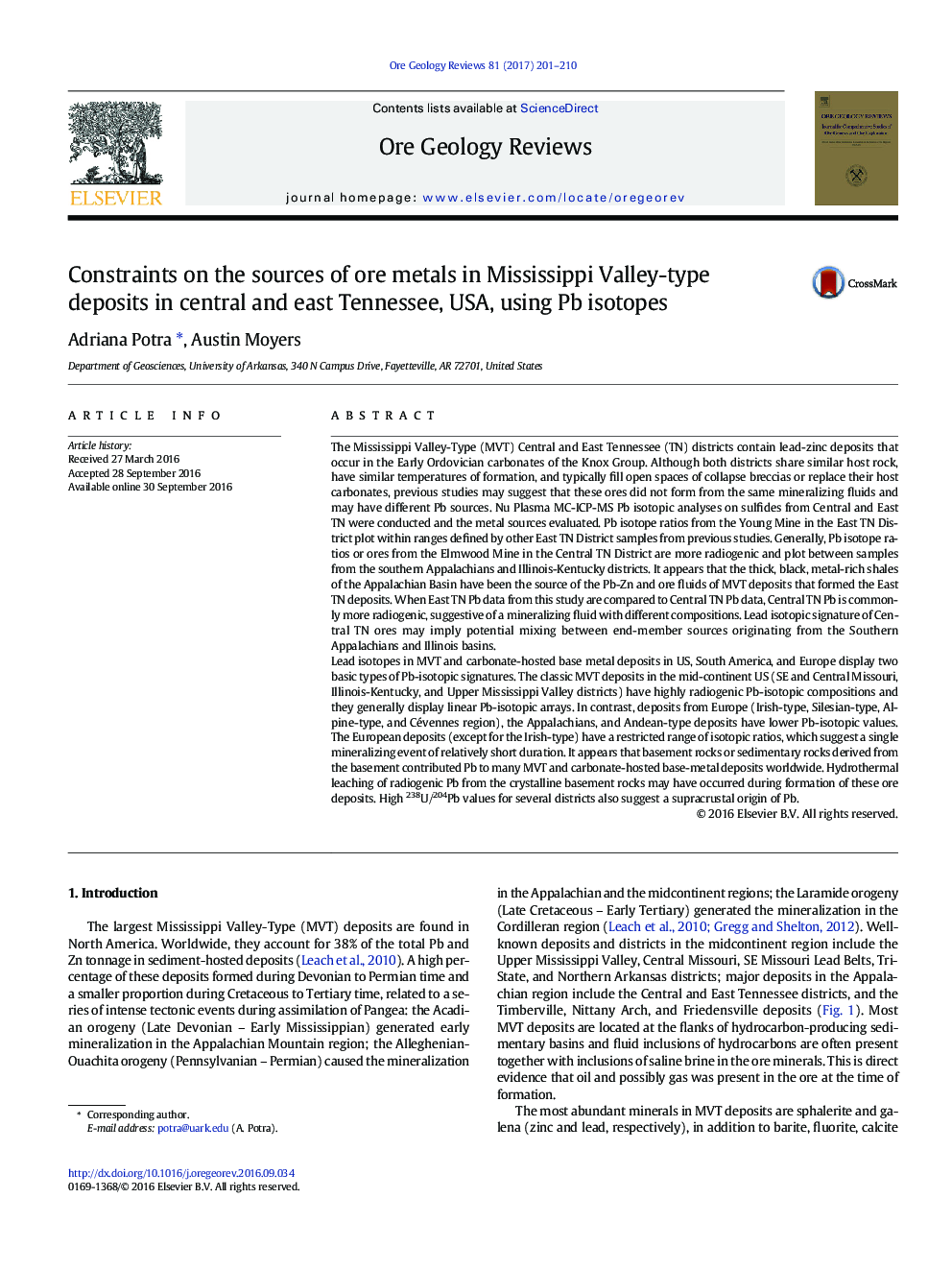| کد مقاله | کد نشریه | سال انتشار | مقاله انگلیسی | نسخه تمام متن |
|---|---|---|---|---|
| 6482020 | 1413928 | 2017 | 10 صفحه PDF | دانلود رایگان |
- Central Tennessee (TN) Pb is commonly more radiogenic than East TN Pb.
- Pb isotopic compositions of Central TN ores suggest an upper crustal source of Pb.
- Pb in Central TN ores originates from mixing of Southern Appalachians and Illinois sources.
- Black, metal-rich shales of the Appalachians Basin source Pb in East TN ores.
The Mississippi Valley-Type (MVT) Central and East Tennessee (TN) districts contain lead-zinc deposits that occur in the Early Ordovician carbonates of the Knox Group. Although both districts share similar host rock, have similar temperatures of formation, and typically fill open spaces of collapse breccias or replace their host carbonates, previous studies may suggest that these ores did not form from the same mineralizing fluids and may have different Pb sources. Nu Plasma MC-ICP-MS Pb isotopic analyses on sulfides from Central and East TN were conducted and the metal sources evaluated. Pb isotope ratios from the Young Mine in the East TN District plot within ranges defined by other East TN District samples from previous studies. Generally, Pb isotope ratios or ores from the Elmwood Mine in the Central TN District are more radiogenic and plot between samples from the southern Appalachians and Illinois-Kentucky districts. It appears that the thick, black, metal-rich shales of the Appalachian Basin have been the source of the Pb-Zn and ore fluids of MVT deposits that formed the East TN deposits. When East TN Pb data from this study are compared to Central TN Pb data, Central TN Pb is commonly more radiogenic, suggestive of a mineralizing fluid with different compositions. Lead isotopic signature of Central TN ores may imply potential mixing between end-member sources originating from the Southern Appalachians and Illinois basins.Lead isotopes in MVT and carbonate-hosted base metal deposits in US, South America, and Europe display two basic types of Pb-isotopic signatures. The classic MVT deposits in the mid-continent US (SE and Central Missouri, Illinois-Kentucky, and Upper Mississippi Valley districts) have highly radiogenic Pb-isotopic compositions and they generally display linear Pb-isotopic arrays. In contrast, deposits from Europe (Irish-type, Silesian-type, Alpine-type, and Cévennes region), the Appalachians, and Andean-type deposits have lower Pb-isotopic values. The European deposits (except for the Irish-type) have a restricted range of isotopic ratios, which suggest a single mineralizing event of relatively short duration. It appears that basement rocks or sedimentary rocks derived from the basement contributed Pb to many MVT and carbonate-hosted base-metal deposits worldwide. Hydrothermal leaching of radiogenic Pb from the crystalline basement rocks may have occurred during formation of these ore deposits. High 238U/204Pb values for several districts also suggest a supracrustal origin of Pb.
Journal: Ore Geology Reviews - Volume 81, Part 1, March 2017, Pages 201-210
